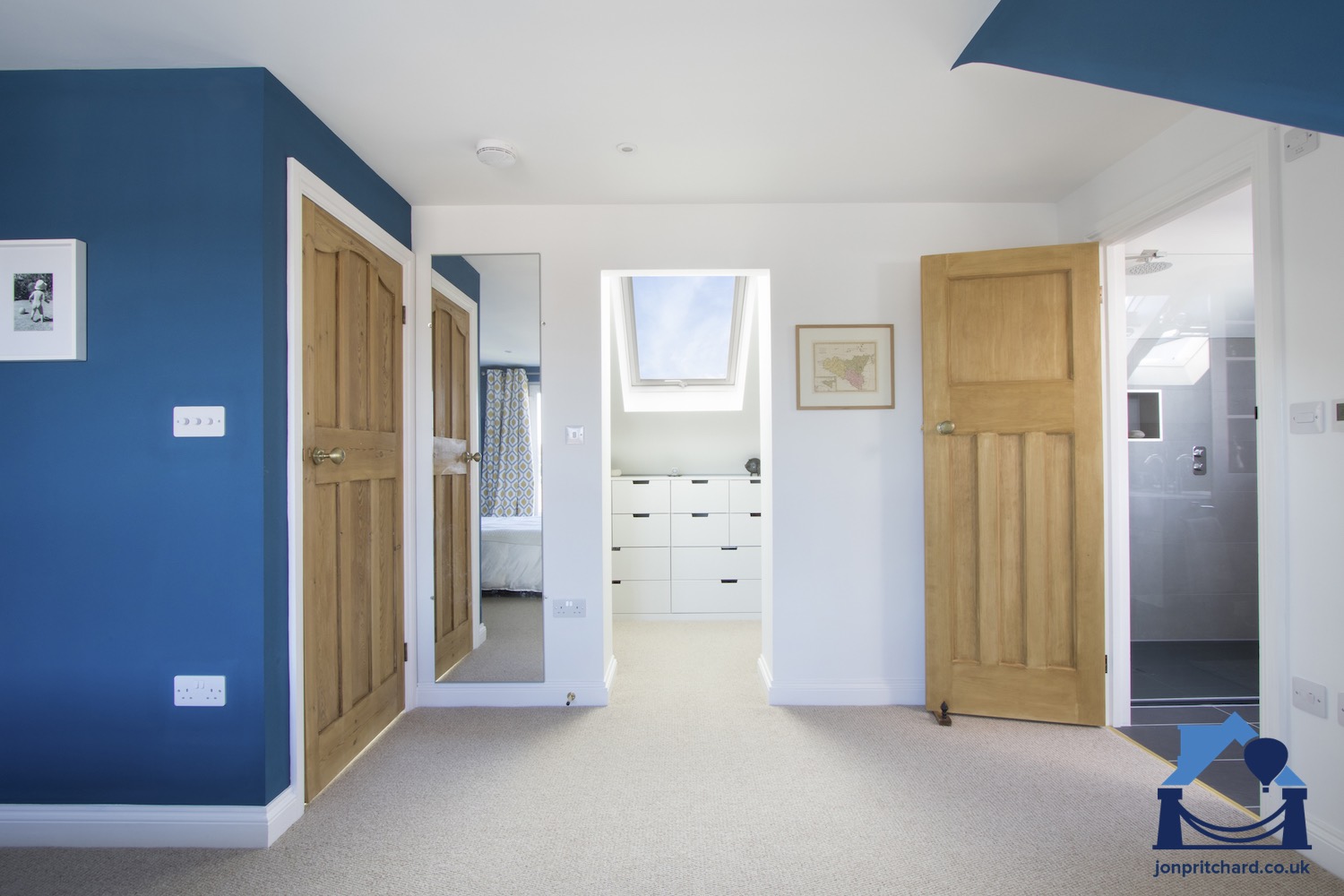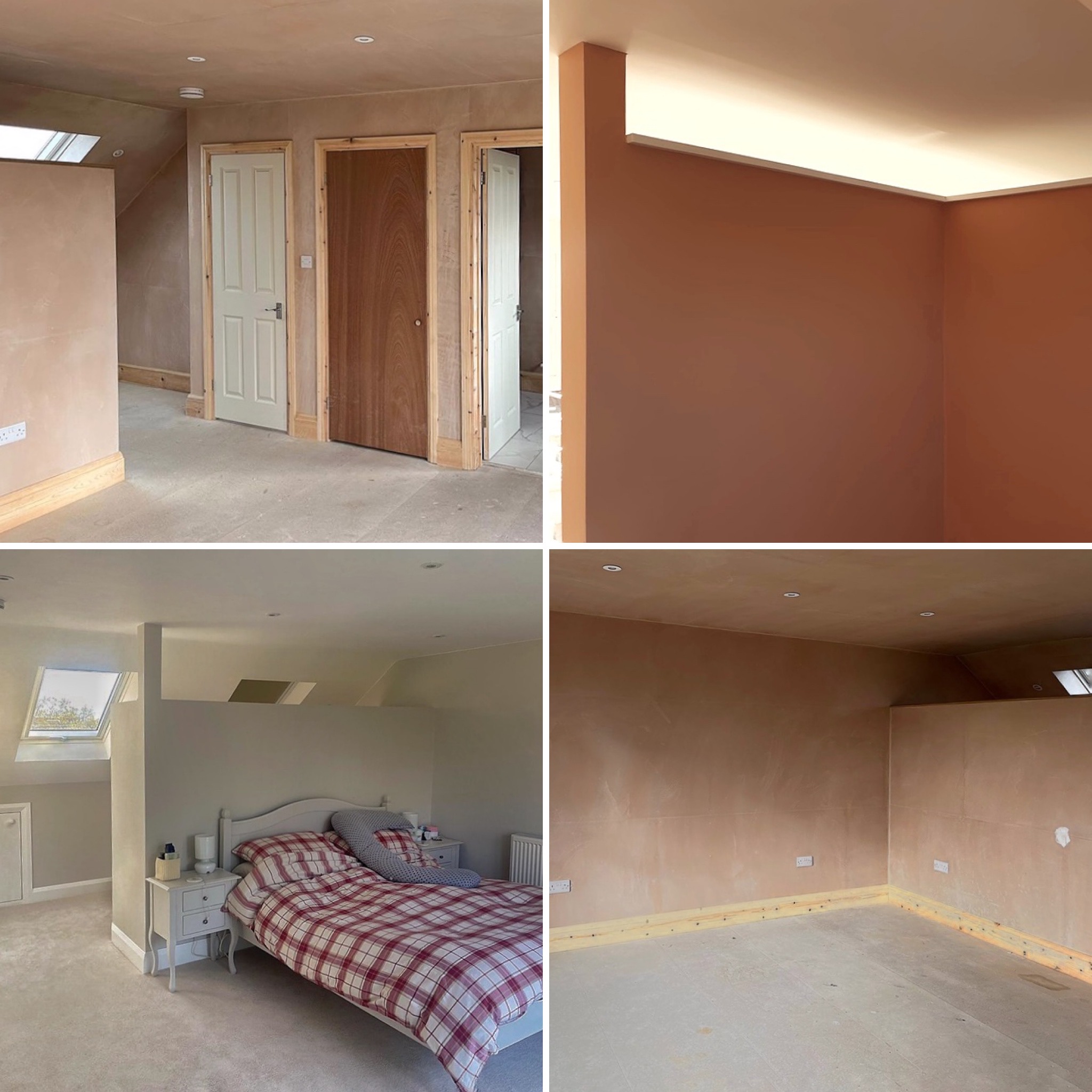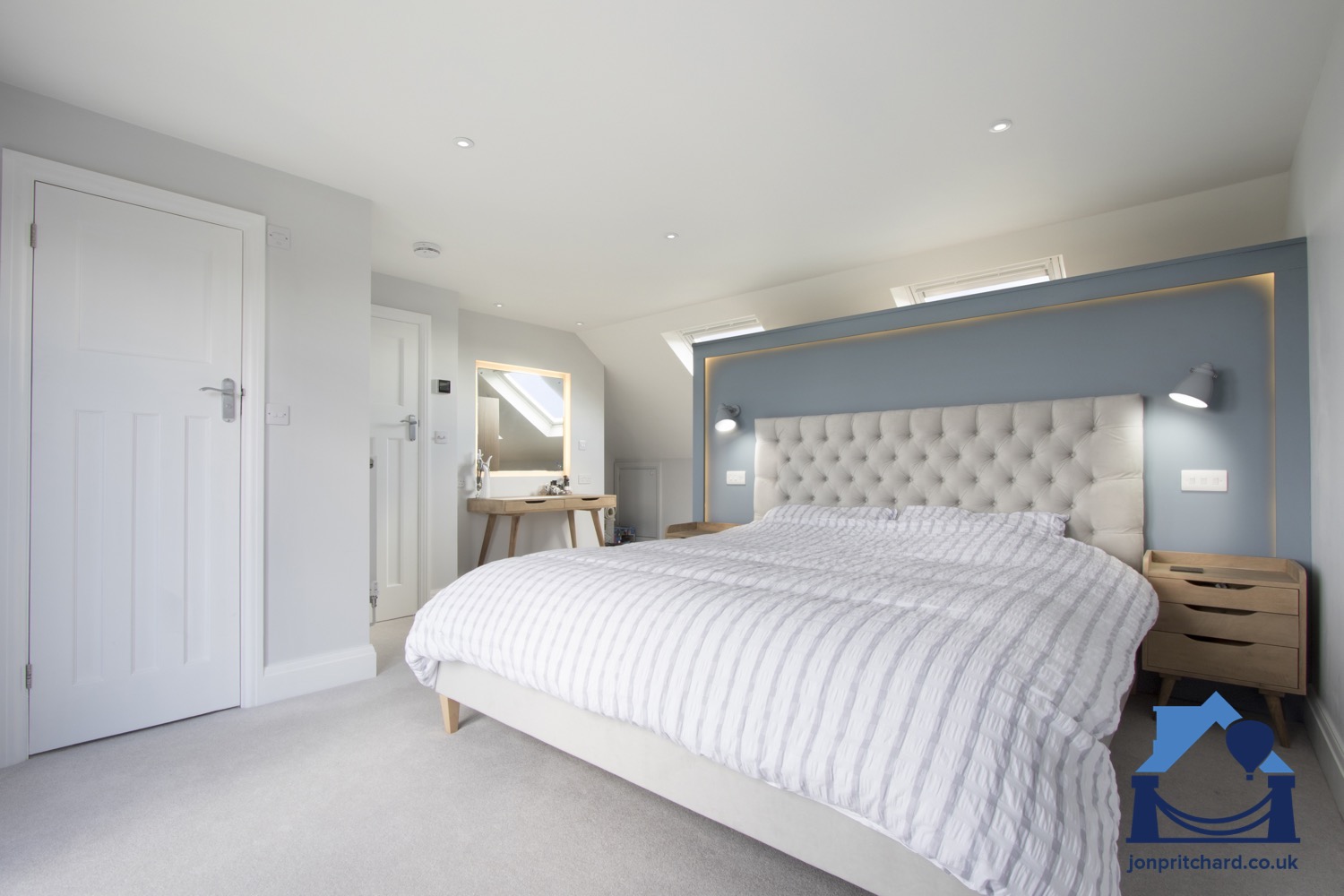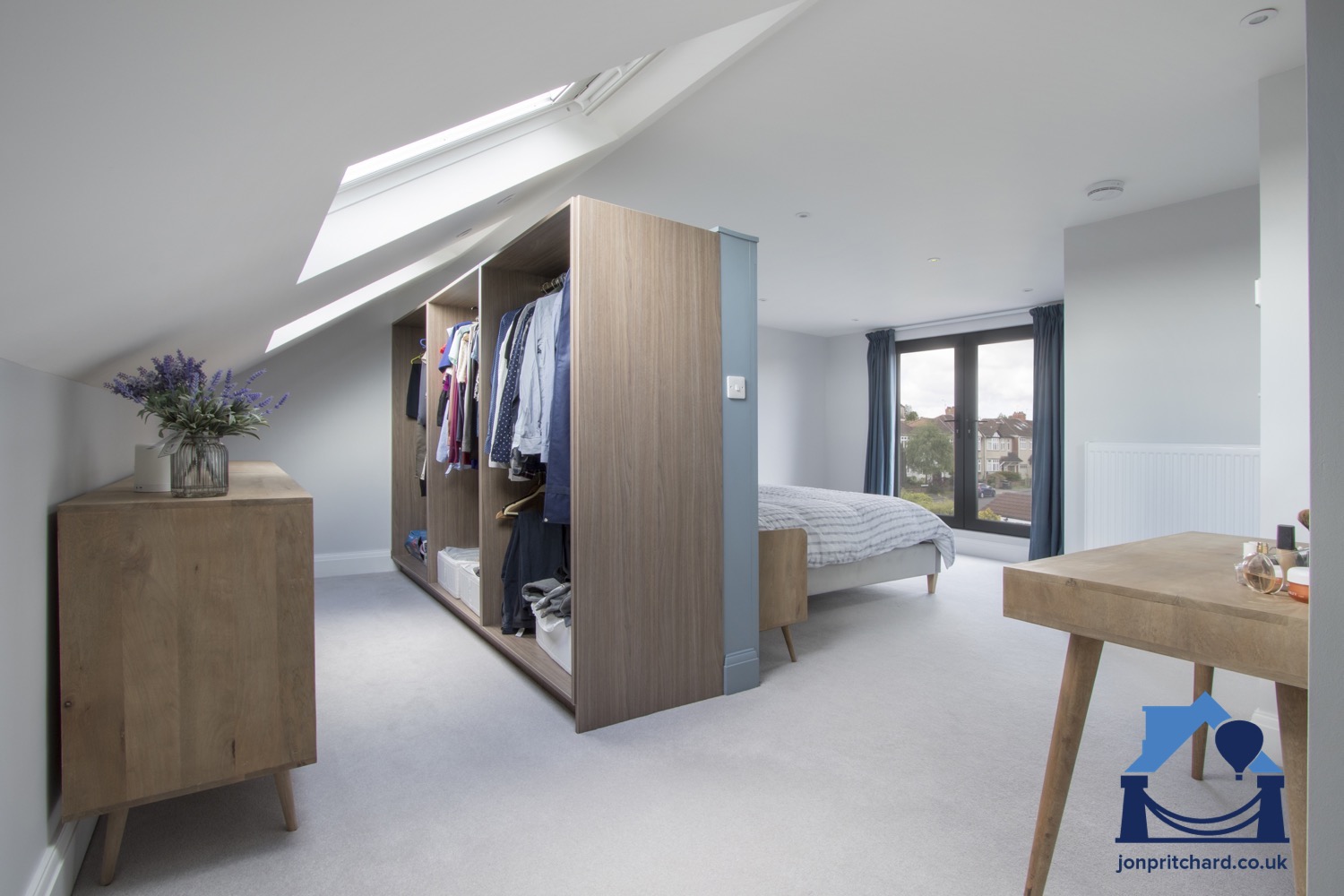
Loft Conversion Design – Floating Walls
Home renovations of any kind, including loft conversions, are a transformation of your living space – functionally and aesthetically.
Among the many innovative techniques and designs that have gained popularity in recent years, floating walls are a versatile and visually striking option that lend themselves well to loft conversions in particular.
What is a Floating Wall?
Before delving into the specifics, it’s essential to understand what a floating wall is. A floating wall is a non-load-bearing partition that appears to hover above the floor, detached from the ceiling and walls that surround it. This design concept creates a sense of spaciousness and visual separation in a room, making it a popular choice for various interior design projects, including loft conversions.

To the right the ensuite, to the left the door to the landing, straight ahead – we created a floating dividing wall and dressing room space.
Reasons for a Floating Wall in your Loft Conversion
A Floating Wall is a wall that is constructed in addition to existing solid walls in your home.
In a loft conversion the purpose is to split the main loft room into two, usually to allowing for a wardrobe area, study area etc within the front sloped area behind it.
Planning and Construction of a Floating Wall
Constructing a floating wall requires careful planning and execution. The key steps involved in constructing a floating wall in your loft conversion are:
- Planning and Design We determine the purpose of your floating wall, its location and dimensions. For this we take into consideration the room’s layout and any structural considerations.
- Frame Construction: The frame of the floating wall in your loft is made of timber studs. These studs are attached to the floor and, if necessary, to the ceiling. The studs provide the structure for the wall and serve as the anchor points for the plasterboard and finishing materials.
- Electrical and Plumbing Considerations: If your floating wall needs to accommodate electrical outlets, lighting fixtures, or plumbing, these are installed before adding the wall finish materials. Special channels or conduits can be integrated into the wall’s frame to hide wires and pipes.
- Insulation: Insulating the interior cavity of your floating wall is crucial for heat, and to an extent sound insulation.
- Plasterboard Installation: Once the frame and insulation are in place, frame is covered with plasterboard, the joins and edges are filled and smoothed with plaster.
- Finishing Touches: Your Jon Pritchard team will install your chosen lighting, any wardobe and cupboard elements including shelves, drawer and doors so that your finished floating wall is ready to be painted and decorated

Benefits of a Floating Wall in a Loft Conversion
#1 Space Optimisation: In loft conversions, where space can be limited, floating walls are an excellent way to create defined areas without sacrificing the openness of the space. They provide separation without making the room feel cramped.
# 2 Visual Appeal: Floating walls add a touch of modern sophistication to any room. Their seemingly weightless appearance can be a focal point in an otherwise traditional space, making them an ideal choice for contemporary design aesthetics.
#3 Flexibility: These walls are incredibly versatile, which is especially useful in loft conversions where we often need to add dividers and walls to create bathroom spaces, dressing rooms etc.
#4 Sound Isolation: When constructed with proper insulation, floating walls can significantly improve sound isolation. This is particularly important in loft conversions, where bedrooms or home offices may be located in close proximity to the main living area.
#5 Lighting Integration: Floating walls provide a hidden space for integrating lighting fixtures, such as recessed lights or LED strips. This creates a warm and inviting atmosphere in the room while keeping the fixtures out of sight.
#6 Hide Structural Imperfections: In older buildings or lofts, there may be structural imperfections that you’d like to conceal. Floating walls can be strategically placed to cover these imperfections while maintaining the room’s aesthetics.
#7 Enhanced Privacy: In loft conversions used as bedrooms or home offices, privacy is crucial. Floating walls can be designed with features like sliding doors or curtains to provide privacy when needed.
#8 Improved Air Circulation: The gap between the floor and the floating wall can improve air circulation in a room. This is especially beneficial for maintaining comfortable temperatures in loft spaces, which can become stuffy during hot weather.
#9 Natural Light: Floating walls do not have to reach all the way up to the ceiling, which means we can design the wall so that light, usually from one or more Velux roof windows, spills into both sides of the wall.
#10 Increased Property Value: A well-executed floating wall can add significant value to your property. Prospective buyers or renters often appreciate the modern aesthetics and functional advantages that a floating wall offers in your converted loft.

This floating wall provides a recessed-lighting-feature headboard on one side, and chic dressing room on the other



Leave a comment
You must be logged in to post a comment.